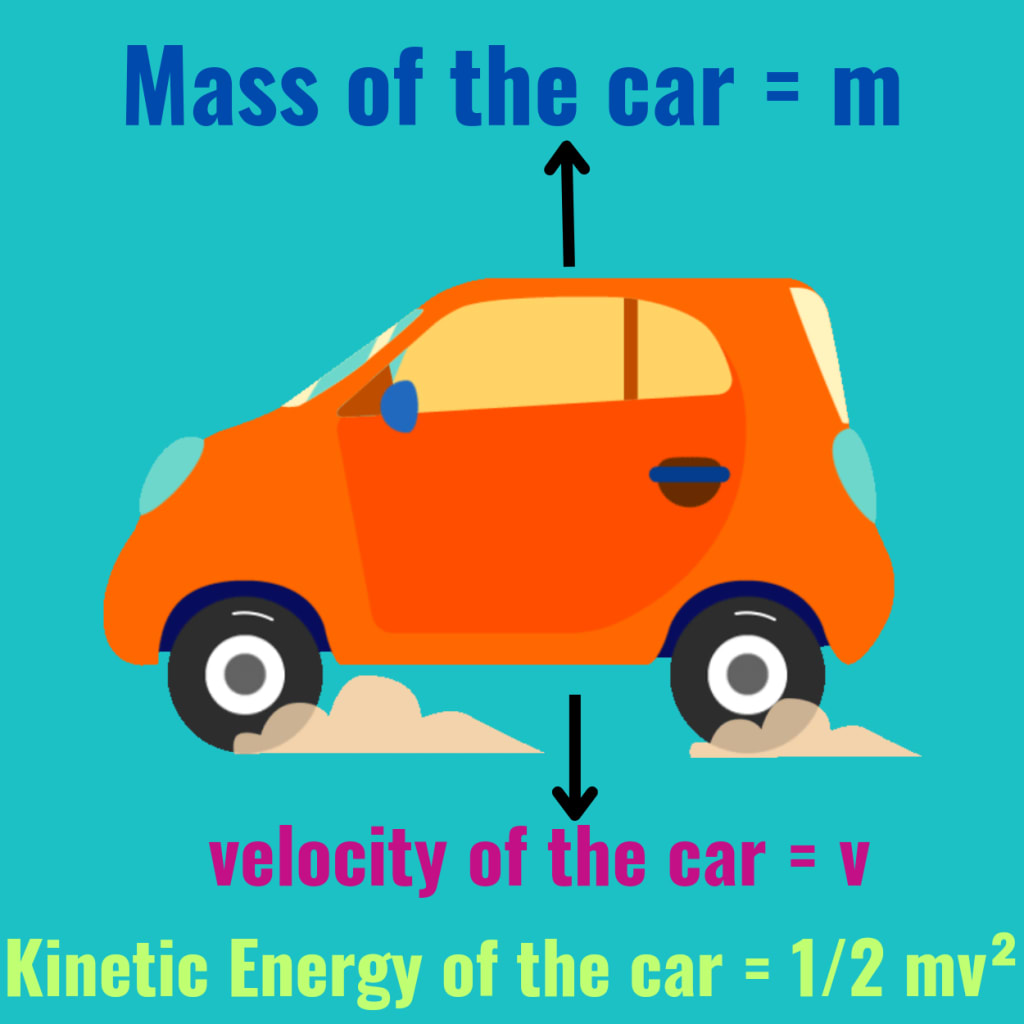Examples of Kinetic Energy
A brief description on Kinetic Energy

Introduction:
Kinetic energy, which is a vital concept of physics, plays a vital role in various forms throughout the universe. From the root level movement of a dancer to the high inspiring power of a speeding bullet, kinetic energy is every where today. To understand the examples of kinetic energy not only increases our comprehension of physics but also enhances our appreciation in the dynamic world we inhabit. In this brief article, I will try to explain into diverse Examples of Kinetic Energy, ranging from everyday life occurrences to monumental phenomena, unraveling its role interplay between motion and energy. To start today’s article Let us first know the basic concept of Kinetic Energy.
Explanation:
What is Kinetic Energy?
Answer: In Physics, the energy which is created by the motion of a body is termed as Kinetic Energy. In another way, we can say that the energy which is possessed by a moving body is called kinetic Energy.
The S.I unit of Kinetic Energy is Newton × Meter or Joule.
Mathematical Formula of Kinetic Energy:

Mathematical Formula of Kinetic Energy = ½ mv²
where,
m = Mass of the moving body and v = Velocity of the moving body.
Now I will explain our main topic Examples of Kinetic Energy, Here are some examples of it.
In our daily life the Examples of Kinetic Energy:
Running: When a person runs, his body possesses Kinetic Energy. This energy is a result of the motion of his muscles, converting chemical energy from food into kinetic energy.
Cycling: When a cyclist pedals, the Kinetic Energy of his body and the bicycle increases with speed. This kinetic energy propels him to move forward.
Swinging: Whether it's a child on a swing or a pendulum clock, swinging motions demonstrate Kinetic Energy. At the highest point of the swing, potential energy is highest, while at the lowest point, kinetic energy peaks.
In transportation the Examples of Kinetic Energy:
Cars: The movement of vehicles is a universal example of Kinetic Energy. When a car accelerates, the engine converts fuel into Kinetic Energy, as a result of which the vehicle starts to move forward.
Trains: Trains are made by engines that convert energy into motion. The Kinetic Energy of a moving train depends on its mass and velocity, enabling it to transport goods and people efficiently.
Aircraft: Whether it's a jumbo jet flying through the sky or a paper airplane gliding through the air, the flight of aircraft must have Kinetic Energy. The engines provide the necessary thrust to overcome air resistance, allowing the aircraft to move in the sky.
In Sports and Recreation:
Basketball: When a basketball player smashes the ball or shoots it into the hoop, Kinetic Energy always play. The force exerted by the player's muscles transfers energy to the ball, causing it to move and this happens as the ball generates Kinetic Energy.
Skiing: As a skier descends a slope, their potential energy decreases while their Kinetic Energy increases. The faster they ski, the more Kinetic Energy they possess.
Surfing: Surfers uses the Kinetic Energy of ocean waves to move themselves across the water. By riding the waves, they convert wave energy into Kinetic Energy, maneuvering skillfully through the surf.
Examples of Kinetic Energy in Natural Phenomena:
Waterfalls: The phenomena of a waterfall is a breathtaking display of Kinetic Energy. When water flows in downstream, gravitational potential energy is converted into Kinetic Energy, which generates tremendous force and motion.
Wind: Wind energy is also a form of kinetic energy, which powers wind turbines to generate electricity. The movement of air masses across the Earth's surface results from variations in temperature and atmospheric pressure, creating Kinetic Energy.

Tides: Tidal energy, acquired from the gravitational forces between the Earth, moon, and sun, is another manifestation of Kinetic Energy. The ebb and flow of ocean tides generate immense Kinetic Energy, which can be used for power generation.
Examples of Kinetic Energy in Industrial and Engineering Applications:
Conveyor Belts: In factories and warehouses, conveyor belts transport goods with the help of Kinetic Energy. Motors drive the belts, transferring rotational energy into linear motion to move items forward along the assembly line.
Hydraulic Systems: Hydraulic machinery, such as cranes and excavators, utilizes Kinetic Energy to perform heavy lifting and excavation tasks. Pressurized hydraulic fluid creates force and motion, powering the machinery's movements.
Roller Coasters: Thrill-seekers experience the exhilarating rush of Kinetic Energy on roller coasters. The gravitational forces and momentum help to move the coaster along its track, converting potential energy into Kinetic Energy as it hurtles through loops and twists.
Now,additionally I will explain problems related with Kinetic Energy which will be beneficial for Class (IX) school students.
Some Problems related on Kinetic Energy:
Question(1): The mass of a bus is 150 quintal and it is moving with a velocity of 50 m/s, Find its Kinetic Energy.
Answer: Here,
mass of the bus(m) = 150 Quintal
= (150 x 100)kg [∵1quintal = 100 kg]
= 15000 kg
Velocity (v) = 50 m/s
∴ Kinetic Energy of the bus(Kₑ)= ½ mv²
= ½ x 15000 x 50² [ Putting values]
=½ x 15000 x 2500
= 15000 x 1250
= 18,750,000 Joule
= 18,750,000/1000 KJ [ 10³ Joule =1Kilo Joule]
= 18,750 KJ
Question(2): The Kinetic Energy of a moving bike is 1600J and mass is 200kg find its velocity.
Answer: Here,
Kinetic Energy of bike (Kₑ) = 1600J
Mass of the bike(m) = 200 kg
Let, Velocity of the bike = v m/s
Now, A/Q
∵ ½ mv² = 1600
=> ½ x 200 x v² = 1600 [Putting values]
=> 100 x v² = 1600
=> v² = 1600 /100
=> v² = 16
=> v = ± 4 [Taking square root in both sides]
∴ Velocity of bike = 4 m/s [neglecting - 4]
Question(3): A robot car is moving with a velocity 60 m/s and gained Kinetic Energy 7200J, Find it’s mass.
Answer: Here,
Velocity (v) = 60m/s
Kinetic Energy (Kₑ) = 7200 J
Let, the mass of the car = m kg
Now, According to Question
½ mv² = 7200
=> ½ x m x 60² = 7200 [Putting values]
=> ½ x m x 3600 = 7200
=> 1800 x m = 7200
=> m = 7200 /1800
=> m = 4
∴ Mass of the car = 4kg





Comments (1)
Thanks for the math explanation - very advanced math that many don't know.